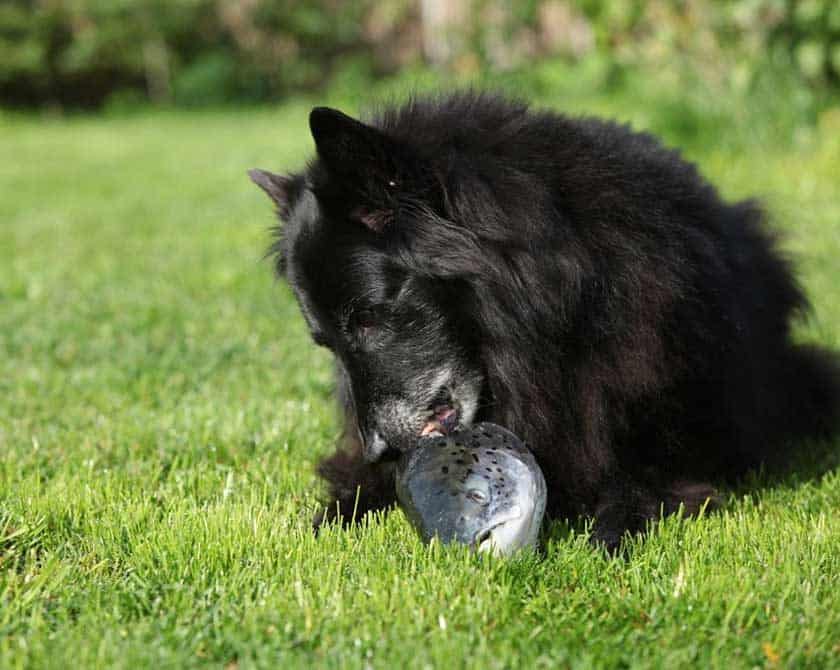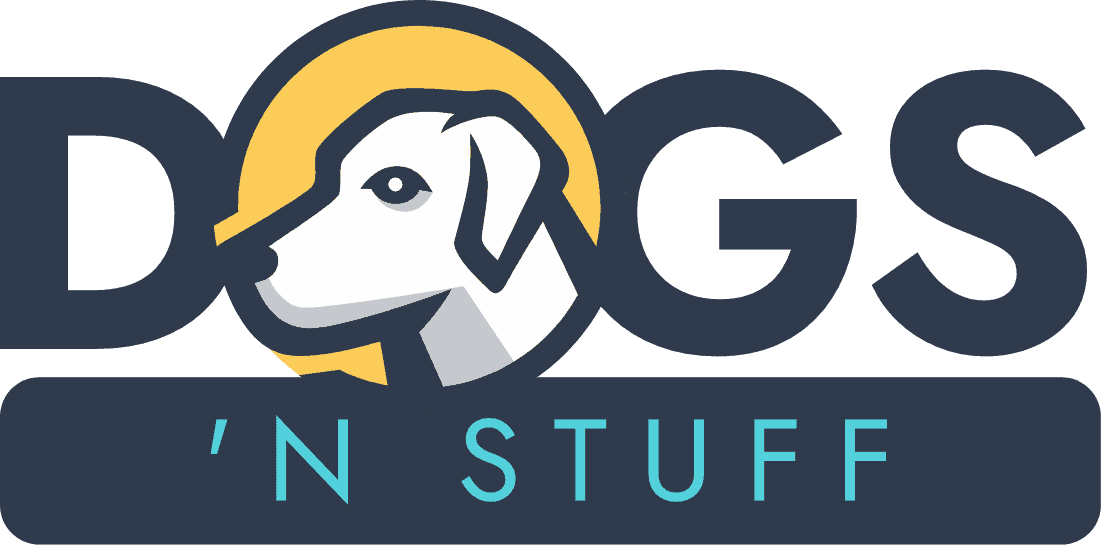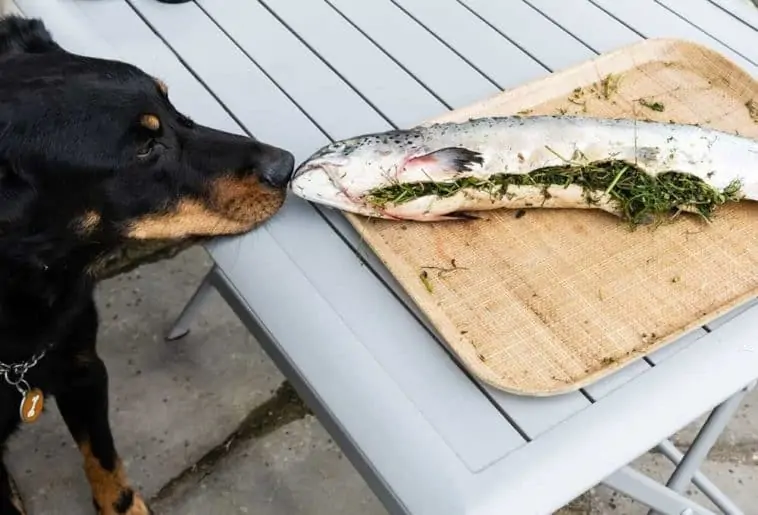Whether you’re making your own homemade dog food or you’d simply like to treat your canine companion to something different every now and then, it’s important to know what is safe to feed your dog. And, when it comes to salmon, there are some important things to keep in mind.
If you’ve been wondering if dogs can eat cooked salmon, the short answer is yes, they can. However, the keyword here is “cooked”. Feeding your dog uncooked salmon could make them quite ill, so you absolutely have to make sure it’s cooked before you give it to your dog.
To make things as easy as possible and to help you ensure the salmon you’re feeding your dog is safe, we’ll take you through a step-by-step guide on how to prepare salmon for a dog. We’ll also look at what health benefits they’ll get from this fishy treat, as well as some of the dangers that can come from eating uncooked salmon.
Table of Contents
Is it Safe to Feed My Dog Salmon?
As we’ve mentioned above, it is safe to feed your dog salmon as long as it’s cooked. This will kill off any parasites and bacteria that may be present in the fish (more on this later) and will ultimately make it safe for your dog to consume.
It’s also very important that you remove all the bones from the salmon before giving it to your dog as these can be a choking hazard. It’s often easier to remove bones from salmon once it’s been cooked, as the surrounding flesh becomes flaky and doesn’t hold onto the tiny, thin bones quite as firmly.
You might be wondering whether it’s safe to give your dog canned salmon. Again, this is safe as long as it’s preserved in spring water. You should avoid giving your dog canned salmon that has been preserved in brine or oil as these can upset their stomach and potentially cause them distress.
How about salmon skin? Well, while salmon skin is 100% safe for dogs as long as it’s cooked, it’s very high in fat. This means it can contribute to weight gain and, for this reason, it’s a good idea to leave it out, especially if you plan on feeding your dog with salmon regularly.
Health Benefits of Salmon for Dogs
When cooked properly, salmon is one of the healthiest foods you can give your dog. It’s packed with omega-3 fatty acids and it’s an excellent source of protein. These two things alone can give your dog the following health benefits:
- Boosting brain health and function
- Supporting and improving your dog’s immune system
- Reducing joint inflammation
- Relieving the symptoms of chronic pain, such as arthritis
- Helping to maintain healthy skin and a shiny, glossy, healthy coat
- Helps to increase joint mobility
- Reduces skin irritation and allergy symptoms
Salmon is also rich in several vitamins and minerals including Vitamin A, Vitamin B-complex, Vitamin D, magnesium, potassium, and zinc.
Health Risks of Salmon for Dogs
We’ve mentioned a few times now how it’s important to only give your dog cooked salmon. Feeding them raw salmon can be potentially fatal as it can contain a parasite called “flukes”. These attach themselves to the salmon using tiny hooks and, when consumed, this parasite can cause vomiting and diarrhea. In some cases, it can even be fatal.
Cooking salmon before giving it to your dog kills this parasite and, as such, there’s no risk of it causing your dog any harm.
It is worth noting, however, that your dog is only likely to suffer from these issues if they have eaten a large amount of raw salmon. If they’ve managed to snaffle up a piece that’s dropped on the floor before you managed to get to it, they should be fine.
What to do if your Dog Has Eaten a Large Amount of Raw Salmon

If your dog has somehow managed to get hold of a couple of raw salmon fillets and has eaten every bit of them, it’s important to take them straight to your veterinarian. The reason for this is because they may have ingested a large amount of a parasite called “Neorickettsia helminthoeca”, which has been known to be present in salmon.
If you don’t take your dog to the veterinarian after they’ve eaten a large amount of raw salmon, they may suffer from SPD (Salmon Poisoning Disease). This happens when the Neorickettsia helminthoeca parasite reaches the small intestine, where it will cause hemorrhaging and eventually invades their entire body.
Symptoms of SPD include:
- Vomiting
- Diarrhea
- Fever
- Eye Discharge
- Nose Discharge
- Swollen Lymph Nodes
If your dog is exhibiting any of these symptoms, call your emergency veterinarian immediately.
How to Prepare Salmon for a Dog
There are several ways that you can prepare salmon for your dog. It can be grilled, roasted, steamed, baked, or poached. The only way we wouldn’t recommend cooking salmon for a dog is fried, as this can add extra calories to it.
Take the time to remove the skin, then follow your chosen cooking method. Once you’re certain that it is thoroughly cooked, allow it to cool, and then remove the bones using your fingers or a pair of kitchen tweezers. Once you’re certain that it is bone-free, you can feed the salmon to your dog.
It’s also important to note that you shouldn’t cook the salmon with any other ingredients. Certain foods, such as onions and garlic, are toxic to dogs and should be avoided at all costs. Instead, cook the salmon by itself and mix it in with their regular wet food or kibble as an extra special treat!
Conclusion
Feeding salmon to your dog is totally safe as long as it’s cooked. It’s also an excellent way to get more naturally occurring nutrients and vitamins into their diet, as well as omega-3 fatty acids and protein.
Under no circumstances should you ever give your dog uncooked salmon as they could ingest the Neorickettsia helminthoeca parasite, which can cause potentially fatal Salmon Poisoning Disease.

